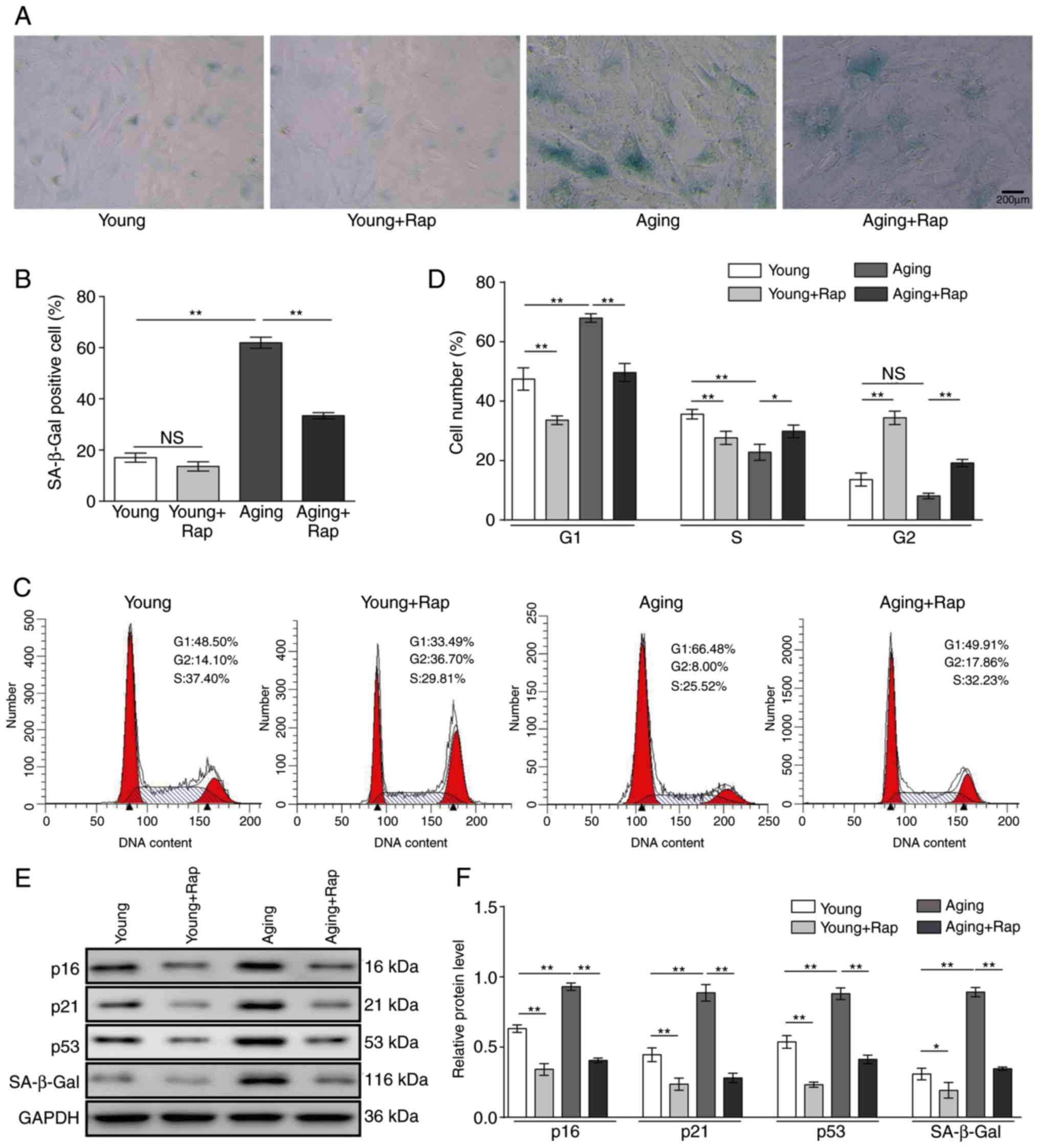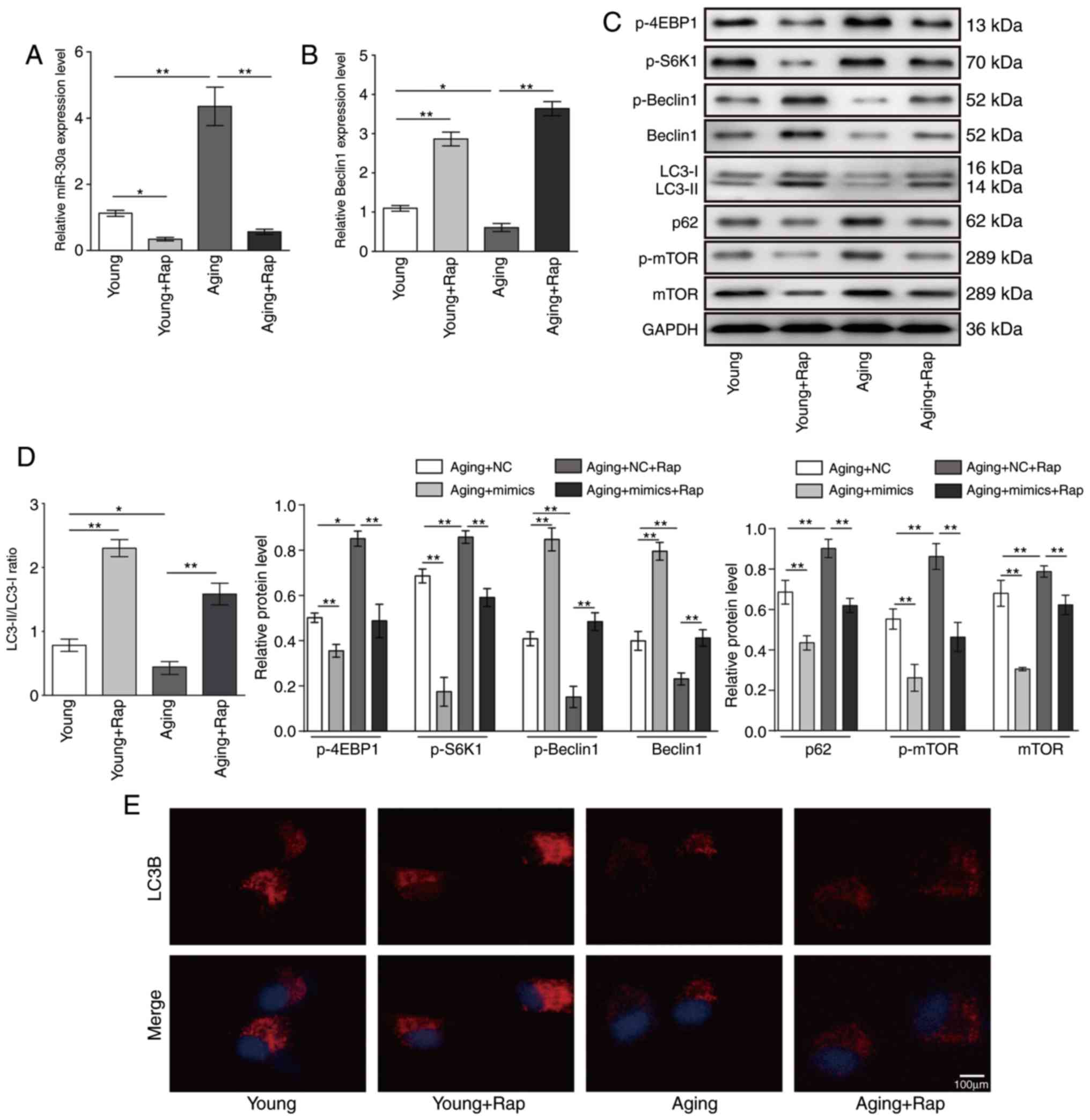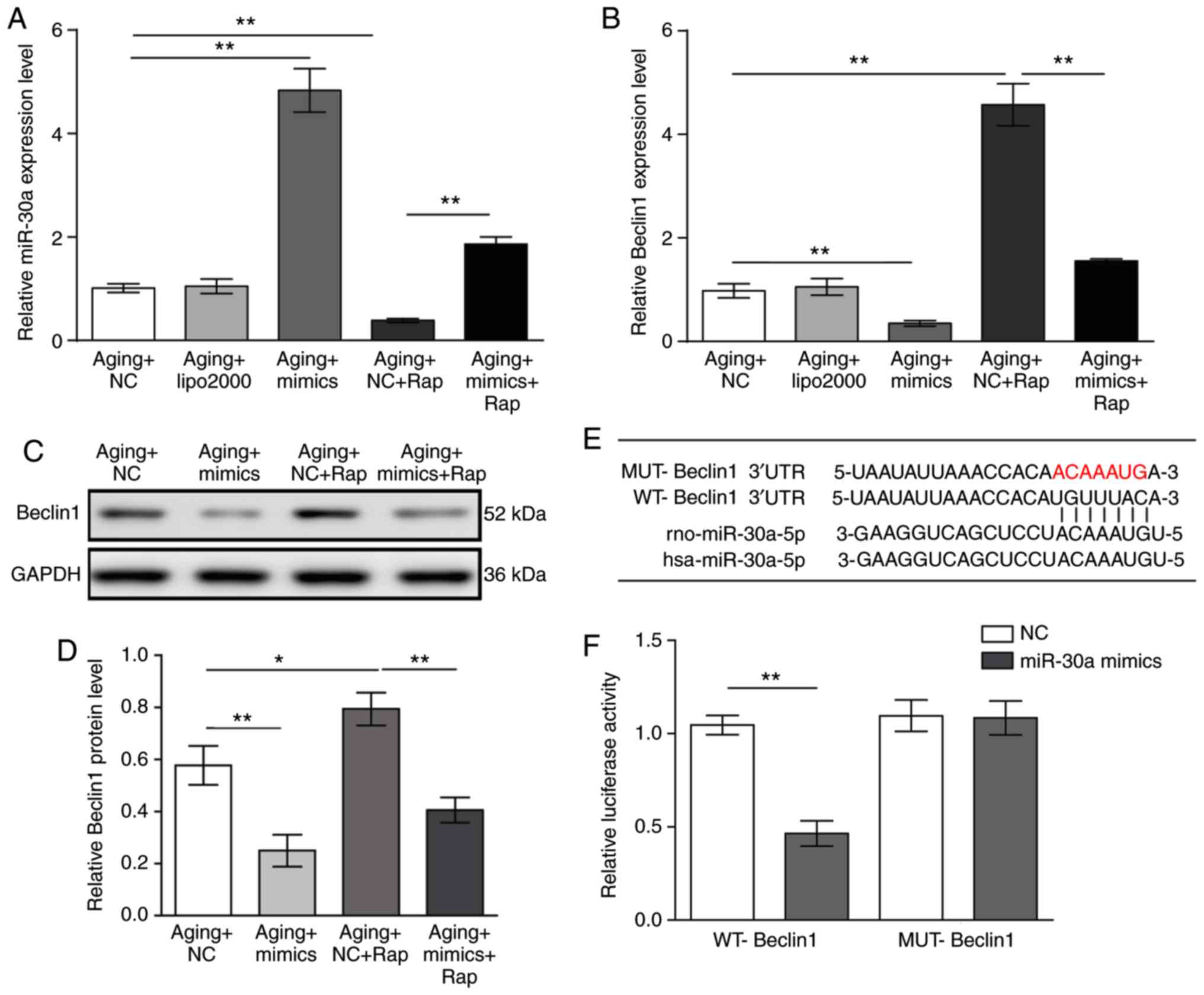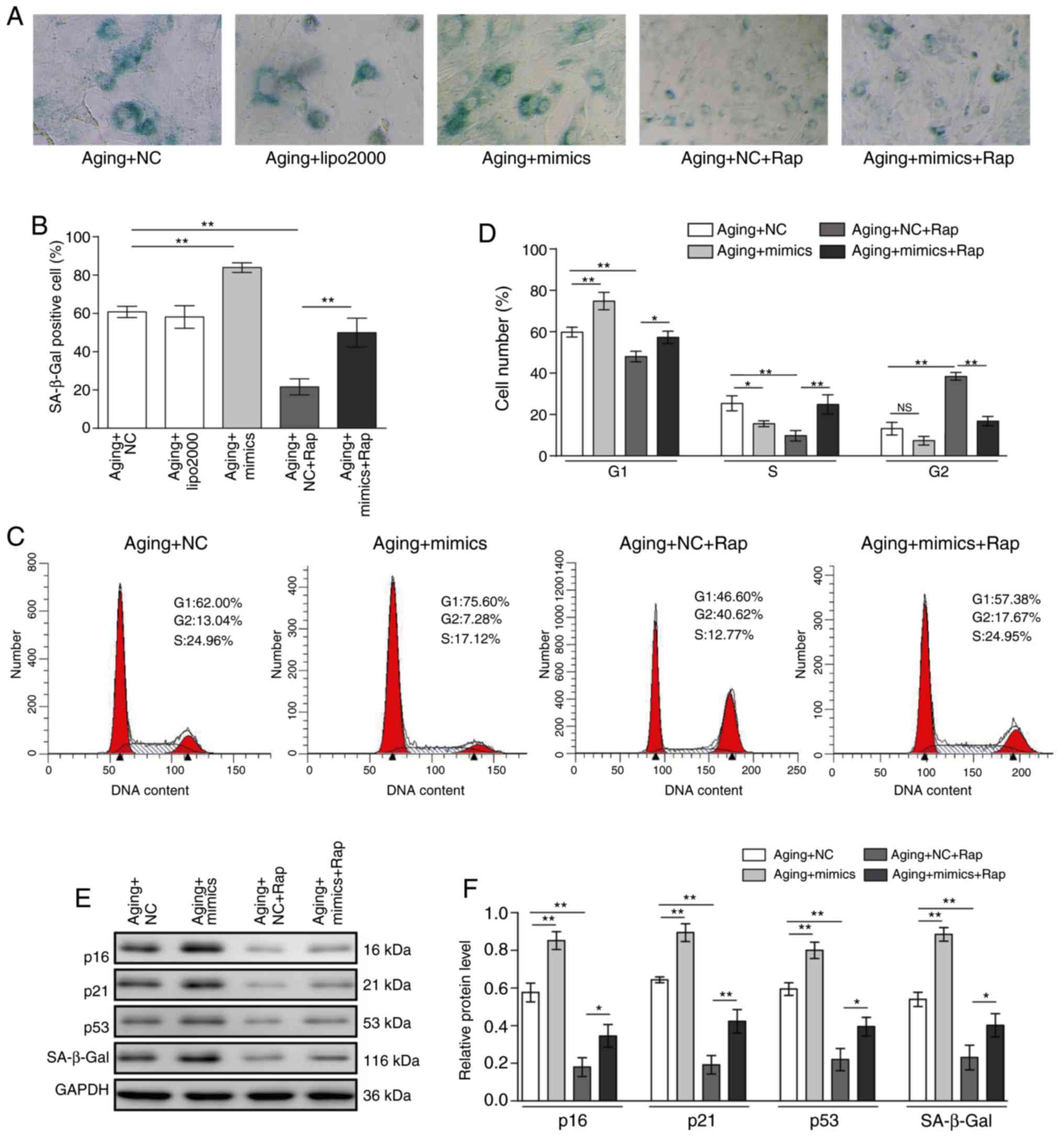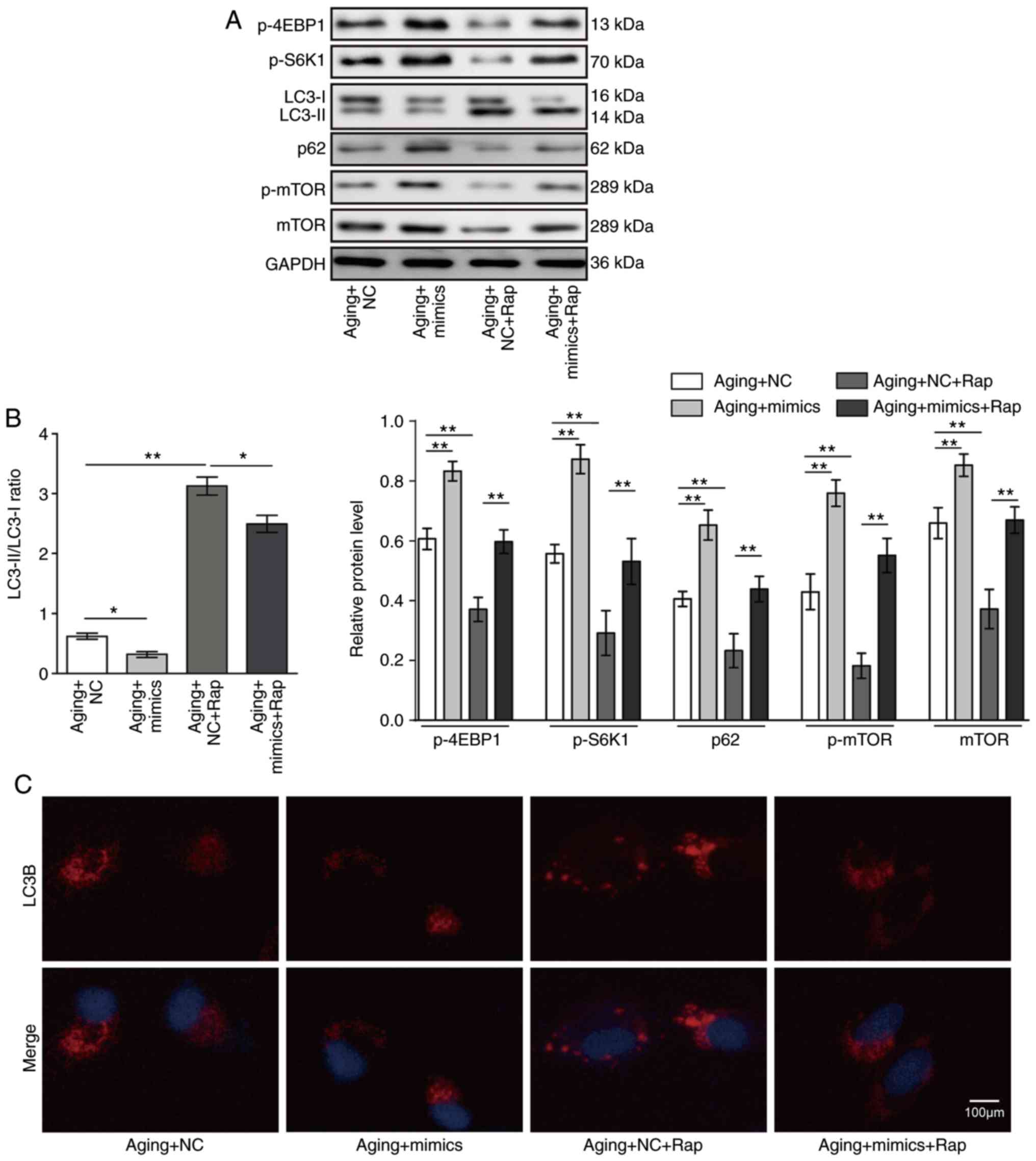|
1
|
Sueta D, Koibuchi N, Yu H, Toyama K,
Uekawa K, Katayama T, Ma MJ, Nakagawa T, Waki H, Maeda M, et al:
Blood pressure variability, impaired autonomic function and
vascular senescence in aged spontaneously hypertensive rats are
ameliorated by angiotensin blockade. Atherosclerosis. 236:101–107.
2014. View Article : Google Scholar : PubMed/NCBI
|
|
2
|
Rodier F and Campisi J: Four faces of
cellular senescence. J Cell Biol. 192:547–556. 2011. View Article : Google Scholar : PubMed/NCBI
|
|
3
|
Wang J, Uryga AK, Reinhold J, Figg N,
Baker L, Finigan A, Gray K, Kumar S, Clarke M and Bennett M:
Vascular smooth muscle cell senescence promotes atherosclerosis and
features of plaque vulnerability. Circulation. 132:1909–1919. 2015.
View Article : Google Scholar : PubMed/NCBI
|
|
4
|
Mistry Y, Poolman T, Williams B and
Herbert KE: A role for mitochondrial oxidants in stress-induced
premature senescence of human vascular smooth muscle cells. Redox
Biol. 1:411–417. 2013. View Article : Google Scholar : PubMed/NCBI
|
|
5
|
Campisi J: Aging, cellular senescence, and
cancer. Annu Rev Physiol. 75:685–705. 2013. View Article : Google Scholar
|
|
6
|
Birch J, Barnes PJ and Passos JF:
Mitochondria, telomeres and cell senescence: Implications for lung
ageing and disease. Pharmacol Ther. 183:34–49. 2018. View Article : Google Scholar
|
|
7
|
Gewirtz DA: Autophagy and senescence: A
partnership in search of definition. Autophagy. 9:808–812. 2013.
View Article : Google Scholar : PubMed/NCBI
|
|
8
|
Gewirtz DA: Autophagy and senescence in
cancer therapy. J Cell Physiol. 229:6–9. 2014.
|
|
9
|
Tan P, Wang YJ, Li S, Wang Y, He JY, Chen
YY, Deng HQ, Huang W, Zhan JK and Liu YS: The PI3K/Akt/mTOR pathway
regulates the replicative senescence of human VSMCs. Mol Cell
Biochem. 422:1–10. 2016. View Article : Google Scholar : PubMed/NCBI
|
|
10
|
Wong M, Leung L and Nighot PK: Role of
autophagy related protein ATG6/Beclin 1 in intestinal tight
junction barrier. Gastroenterology. 152(Suppl 1): S1192017.
View Article : Google Scholar
|
|
11
|
Kim J and Guan KL: Regulation of the
autophagy initiating kinase ULK1 by nutrients: Roles of mTORC1 and
AMPK. Cell Cycle. 10:1337–1338. 2011. View Article : Google Scholar : PubMed/NCBI
|
|
12
|
Pattingre S, Espert L, Biardpiechaczyk M
and Codogno P: Regulation of macroautophagy by mTOR and Beclin1
complexes. Biochimie. 90:313–323. 2008. View Article : Google Scholar
|
|
13
|
Zhan JK, Wang YJ, Wang Y, Wang S, Tan P,
Huang W and Liu YS: The mammalian target of rapamycin signalling
pathway is involved in osteoblastic differentiation of vascular
smooth muscle cells. Can J Cardiol. 30:568–575. 2014. View Article : Google Scholar : PubMed/NCBI
|
|
14
|
Wilkinson JE, Burmeister L, Brooks SV,
Chan CC, Friedline S, Harrison DE, Hejtmancik JF, Nadon N, Strong
R, Wood LK, et al: Rapamycin slows aging in mice. Aging Cell.
11:675–682. 2012. View Article : Google Scholar : PubMed/NCBI
|
|
15
|
Pospelova TV, Leontieva OV, Bykova TV,
Zubova SG, Pospelov VA and Blagosklonny MV: Suppression of
replicative senescence by rapamycin in rodent embryonic cells. Cell
Cycle. 11:2402–2407. 2012. View
Article : Google Scholar : PubMed/NCBI
|
|
16
|
Rong W, Zhen Y, Sunchu B, Caples K, Zhao
S, Dang I and Perez VI: Rapamycin modulates cell senescence and
inflammation by different mechanisms. Exp Gerontol. 94:126–127.
2017. View Article : Google Scholar
|
|
17
|
Muther C, Jobeili L, Garion M, Heraud S,
Thepot A, Damour O and Lamartine J: An expression screen for
aged-dependent microRNAs identifies miR-30a as a key regulator of
aging features in human epidermis. Aging (Albany NY). 9:2376–2396.
2017. View Article : Google Scholar :
|
|
18
|
Lin X, Zhan JK, Wang YJ, Tan P, Chen YY,
Deng HQ and Liu YS: Function, role, and clinical application of
MicroRNAs in vascular aging. Biomed Res Int. 2016:60213942016.
View Article : Google Scholar
|
|
19
|
Zhu H, Wu H, Liu X, Li B, Chen Y, Ren X,
Liu CG and Yang JM: Regulation of autophagy by a beclin 1-targeted
microRNA, miR-30a, in cancer cells. Autophagy. 5:816–823. 2009.
View Article : Google Scholar : PubMed/NCBI
|
|
20
|
Xu R, Liu S, Chen H and Lao L:
MicroRNA-30a downregulation contributes to chemoresistance of
osteosarcoma cells through activating Beclin-1-mediated autophagy.
Oncology Reports. 35:1757–1763. 2016. View Article : Google Scholar
|
|
21
|
Lee KY, Kim JR and Choi HC:
Genistein-induced LKB1-AMPK activation inhibits senescence of VSMC
through autophagy induction. Vascul Pharmacol. 81:75–82. 2016.
View Article : Google Scholar : PubMed/NCBI
|
|
22
|
Zhang Y, Qian X, Sun X, Lin C, Jing Y, Yao
Y, Ma Z, Kuai M, Lu Y, Kong X, et al: Liuwei Dihuang, a traditional
Chinese medicinal formula, inhibits proliferation and migration of
vascular smooth muscle cells via modulation of estrogen receptors.
Int J Mol Med. 42:31–40. 2018.PubMed/NCBI
|
|
23
|
Livak KJ and Schmittgen TD: Analysis of
relative gene expression data using real-time quantitative PCR and
the 2(-Delta Delta C(T)) method. Methods. 25:402–408. 2001.
View Article : Google Scholar
|
|
24
|
Luo Y, Li L, Zou P, Wang J, Shao L, Zhou D
and Liu L: Rapamycin enhances long-term hematopoietic
reconstitution of ex vivo expanded mouse hematopoietic stem cells
by inhibiting senescence. Transplantation. 97:20–29. 2014.
View Article : Google Scholar
|
|
25
|
Hinojosa CA, Mgbemena V, Van Roekel S,
Austad SN, Miller RA, Bose S and Orihuela CJ: Enteric-delivered
rapamycin enhances resistance of aged mice to pneumococcal
pneumonia through reduced cellular senescence. Exp Gerontol.
47:958–965. 2012. View Article : Google Scholar : PubMed/NCBI
|
|
26
|
Blagosklonny MV: Progeria, rapamycin and
normal aging: Recent breakthrough. Aging (Albany NY). 3:685–691.
2011. View Article : Google Scholar
|
|
27
|
Qi LW, Zhang Z, Zhang CF, Anderson S, Liu
Q, Yuan CS and Wang CZ: Anti-colon cancer effects of 6-Shogaol
through G2/M cell cycle arrest by p53/p21-cdc2/cdc25A crosstalk. Am
J Chin Med. 43:743–756. 2015. View Article : Google Scholar : PubMed/NCBI
|
|
28
|
Wan D, Jiang C, Hua X, Wang T and Chai Y:
Cell cycle arrest and apoptosis induced by aspidin PB through the
p53/p21 and mitochondria-dependent pathways in human osteosarcoma
cells. Anticancer Drugs. 26:931–941. 2015. View Article : Google Scholar : PubMed/NCBI
|
|
29
|
Sotthibundhu A, McDonagh K, von Kriegsheim
A, Garcia-Munoz A, Klawiter A, Thompson K, Chauhan KD, Krawczyk J,
Mcinerney V, Dockery P, et al: Rapamycin regulates autophagy and
cell adhesion in induced pluripotent stem cells. Stem Cell Res
Ther. 7:1662016. View Article : Google Scholar : PubMed/NCBI
|
|
30
|
Russell RC, Tian Y, Yuan H, Park HW, Chang
YY, Kim J, Kim H, Neufeld TP, Dillin A and Guan KL: ULK1 induces
autophagy by phosphorylating Beclin-1 and activating VPS34 lipid
kinase. Nat Cell Biol. 15:741–750. 2013. View Article : Google Scholar : PubMed/NCBI
|
|
31
|
Xu J, Fotouhi M and McPherson PS:
Phosphorylation of the exchange factor DENND3 by ULK in response to
starvation activates Rab12 and induces autophagy. EMBO Rep.
16:709–718. 2015. View Article : Google Scholar : PubMed/NCBI
|
|
32
|
Chiao YA, Kolwicz SC, Basisty N, Gagnidze
A, Zhang J, Gu H, Djukovic D, Beyer RP, Raftery D, MacCoss MJ, et
al: Rapamycin transiently induces mitochondrial remodeling to
reprogram energy metabolism in old hearts. Aging (Albany NY).
8:314–327. 2016. View Article : Google Scholar
|
|
33
|
Sarbassov DD, Ali SM, Kim DH, Guertin DA,
Latek RR, Erdjument-Bromage H, Tempst P and Sabatini DM: Rictor, a
novel binding partner of mTOR, defines a rapamycin-insensitive and
raptor-independent pathway that regulates the cytoskeleton. Curr
Biol. 14:1296–1302. 2004. View Article : Google Scholar : PubMed/NCBI
|
|
34
|
Huang M, Ke Y, Sun X, Yu L, Yang Z, Zhang
Y, Du M, Wang J, Liu X and Huang SJ: Mammalian target of rapamycin
signaling is involved in the vasculogenic mimicry of glioma via
hypoxia-inducible factor-1α. Oncol Rep. 32:1973–1980. 2014.
View Article : Google Scholar : PubMed/NCBI
|
|
35
|
Gu Z, Tan W, Ji J, Feng G, Meng Y, Da Z,
Guo G, Xia Y, Zhu X, Shi G and Cheng C: Rapamycin reverses the
senescent phenotype and improves immunoregulation of mesenchymal
stem cells from MRL/lpr mice and systemic lupus erythematosus
patients through inhibition of the mTOR signaling pathway. Aging
(Albany NY). 8:1102–1114. 2016. View Article : Google Scholar
|
|
36
|
Fu XT, Shi YH, Zhou J, Peng YF, Liu WR,
Shi GM, Gao Q, Wang XY, Song K, Fan J and Ding ZB: MicroRNA-30a
suppresses autophagy-mediated anoikis resistance and metastasis in
hepatocellular carcinoma. Cancer Lett. 412:108–117. 2018.
View Article : Google Scholar
|
|
37
|
Zhang L, Cheng R and Huang Y: MiR-30a
inhibits BECN1-mediated autophagy in diabetic cataract. Oncotarget.
8:77360–77368. 2017.PubMed/NCBI
|
|
38
|
Geng GJ, Yang YT, Jiang J, Yu XY and Fa
XE: MicroRNA-30a suppresses non-small-cell lung cancer by targeting
Myb-related protein B. Exp Ther Med. 15:1633–1639. 2018.PubMed/NCBI
|
|
39
|
Wang X, Xu X, Wei W, Yu Z, Wen L, He K and
Fan H: MicroRNA-30a-5p promotes replication of porcine circovirus
type 2 through enhancing autophagy by targeting 14-3-3. Arch Virol.
162:2643–2654. 2017. View Article : Google Scholar : PubMed/NCBI
|
|
40
|
Zou Z, Wu L, Ding H, Wang Y, Zhang Y, Chen
X, Chen X, Zhang CY, Zhang Q and Zen K: MicroRNA-30a sensitizes
tumor cells to cis-platinum via suppressing beclin 1-mediated
Autophagy. J Biol Chem. 287:4148–4156. 2012. View Article : Google Scholar :
|
|
41
|
Wang P, Liang J, Li Y and Li J, Yang X,
Zhang X, Han S, Li S and Li J: Down-regulation of miRNA-30a
alleviates cerebral isch-emic injury through enhancing beclin
1-mediated autophagy. Neurochem Res. 39:1279–1291. 2014. View Article : Google Scholar : PubMed/NCBI
|



